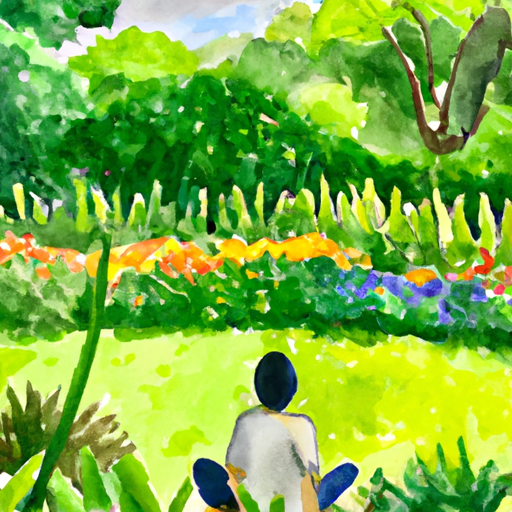In today's fast-paced world, it's easy to get caught up in the chaos and lose sight of the present moment. However, practicing mindfulness can help bring us back to the here and now, allowing us to fully experience and appreciate each moment. Whether you're new to mindfulness or looking to deepen your practice, this article will guide you through the art of mindfulness and explore different techniques for an effective practice. From tips and strategies for cultivating present moment awareness to a step-by-step guide on incorporating mindfulness into your daily routine, this article is your go-to resource for all things mindfulness. So, let's embark on this journey together and discover the transformative power of mindfulness practice.
- "The Art of Mindfulness: Exploring Different Techniques for an Effective Practice" 1.
- "Mindfulness Practice: Tips and Strategies for Cultivating Present Moment Awareness" 2.
- "Mindfulness Made Simple: Step-by-Step Guide to Incorporating Mindfulness into Your Daily Routine" 3.
"The Art of Mindfulness: Exploring Different Techniques for an Effective Practice" 1.

The Art of Mindfulness: Exploring Different Techniques for an Effective Practice.
Mindfulness is a powerful practice that can bring about numerous benefits for our mental, emotional, and physical well-being. However, it may not always be easy to know how to begin or sustain a mindfulness practice. Fortunately, there are various techniques and approaches that can help individuals cultivate mindfulness and integrate it into their daily lives.
1. Mindful Breathing: One of the most common techniques for practicing mindfulness is focusing on the breath. By bringing our attention to the sensation of the breath entering and leaving the body, we can anchor ourselves in the present moment. Simply find a comfortable position, close your eyes, and gently direct your attention to your breath. Notice the inhales and exhales, the rise and fall of your abdomen or chest. Whenever your mind wanders, gently bring your focus back to the breath. This practice helps develop concentration and awareness.
2. Body Scan: The body scan technique involves systematically bringing attention to different parts of the body. Starting from the top of the head and moving down to the toes, we pay attention to any sensations or tensions we may be experiencing. This technique helps us become more attuned to our bodies and can be particularly beneficial for promoting relaxation and reducing stress.
3. Walking Meditation: Mindfulness can also be practiced in motion through walking meditation. Find a quiet and peaceful place where you can walk slowly and attentively. As you walk, bring your awareness to the sensations in your feet, legs, and body. Notice the movement of your muscles and the contact of your feet with the ground. If your mind starts to wander, gently guide it back to the sensations of walking. Walking meditation can be a refreshing and grounding practice, especially when done outdoors in nature.
4. Mindful Eating: Another way to incorporate mindfulness into our daily lives is through mindful eating. Instead of rushing through meals or eating on autopilot, take the time to fully engage with the experience of eating. Pay attention to the colors, textures, and flavors of the food. Chew slowly and savor each bite. Notice how your body feels as you eat and how the food nourishes you. By bringing awareness to the act of eating, we can cultivate a healthier relationship with food and enhance our overall well-being.
5. Loving-Kindness Meditation: Mindfulness can also be combined with the practice of loving-kindness meditation to cultivate compassion and empathy. In this practice, we extend kind and loving thoughts not only to ourselves but also to others. Start by focusing on yourself and silently repeat phrases such as "May I be happy, may I be healthy, may I live with ease." Then, gradually expand your circle of compassion to include loved ones, acquaintances, and even difficult individuals. This practice helps develop a sense of connection and empathy toward all beings.
Remember, mindfulness is not about achieving a particular state of mind but rather about developing an attitude of non-judgmental awareness in the present moment. Experiment with these different techniques and find what resonates with you. Consistency is key, so set aside a specific time each day to practice mindfulness. With patience and dedication, you can gradually integrate mindfulness into your daily life and experience its transformative effects.
"Mindfulness Practice: Tips and Strategies for Cultivating Present Moment Awareness" 2.

Mindfulness Practice: Tips and Strategies for Cultivating Present Moment Awareness
In our fast-paced and chaotic world, practicing mindfulness has become increasingly important for maintaining our mental well-being. Mindfulness is the act of being fully present and aware of our thoughts, feelings, sensations, and surroundings without judgement. It allows us to engage in the present moment, rather than dwelling on the past or worrying about the future. Cultivating present moment awareness takes practice, but with dedication and commitment, anyone can incorporate mindfulness into their daily lives. Here are some tips and strategies to help you develop a mindfulness practice:
1. Start with short sessions: Begin by dedicating just a few minutes each day to mindfulness practice. Find a quiet and comfortable space where you can sit or lie down without distractions. Set a timer for 5-10 minutes and focus your attention on your breath. Observe each inhalation and exhalation, noticing the sensations and rhythm. When your mind inevitably wanders, gently bring your focus back to the breath. Gradually increase the duration of your sessions as you become more comfortable with the practice.
2. Engage your senses: Mindfulness is not limited to sitting meditation. It can be practiced in various activities throughout the day. Engage your senses by paying attention to the sights, sounds, smells, tastes, and textures of everyday experiences. For example, when eating a meal, savor each bite, noticing the flavors and textures. When taking a walk, focus on the sensation of your feet hitting the ground or the sounds of nature around you. By fully immersing yourself in the present moment, you cultivate mindfulness.
3. Non-judgmental awareness: One of the key aspects of mindfulness is non-judgmental awareness. When practicing mindfulness, try to observe your thoughts and emotions without labeling them as good or bad. Instead, adopt a curious and compassionate attitude toward whatever arises in your mind. Recognize that thoughts and emotions are transient and do not define you. This non-judgmental perspective helps cultivate acceptance and reduces unnecessary stress and self-criticism.
4. Incorporate mindfulness into daily routines: Look for opportunities to incorporate mindfulness into your daily routines. For example, practice mindful breathing while waiting in line or brushing your teeth. Use everyday activities as reminders to bring your attention back to the present moment. By integrating mindfulness into your daily life, it becomes a natural part of your existence rather than a separate practice.
5. Seek guidance and support: If you find it challenging to establish a mindfulness practice on your own, consider seeking guidance and support. There are numerous resources available, such as mindfulness apps, guided meditation recordings, or mindfulness courses. Joining a mindfulness group or attending a retreat can also provide you with a supportive community and expert guidance to deepen your practice.
Remember, mindfulness is a skill that develops over time with consistent practice. Be patient with yourself and avoid striving for perfection. Embrace the process and enjoy the benefits of increased present moment awareness, reduced stress, and improved overall well-being. Start incorporating mindfulness practice into your life today and experience the transformative power it can have on your mind and body.
"Mindfulness Made Simple: Step-by-Step Guide to Incorporating Mindfulness into Your Daily Routine" 3.

Incorporating mindfulness into your daily routine may seem challenging at first, but with a step-by-step guide, it can become a simple and effortless practice. By making mindfulness a part of your daily routine, you can experience a wide range of benefits, including reduced stress, improved focus, and enhanced overall well-being. Here is a step-by-step guide to help you incorporate mindfulness into your daily life:
1. Set aside dedicated time: Start by designating a specific time each day for your mindfulness practice. It can be as little as 10 minutes or as long as an hour, depending on your schedule and preferences. Find a quiet and comfortable space where you can sit or lie down without distractions.
2. Focus on your breath: Begin your mindfulness practice by focusing on your breath. Take slow, deep breaths in through your nose and out through your mouth. Pay attention to the sensation of your breath entering and leaving your body. If your mind starts to wander, gently bring your focus back to your breath without judgment.
3. Observe your thoughts and emotions: As you continue your mindfulness practice, observe any thoughts or emotions that arise without judgment or attachment. Simply acknowledge them and let them pass by, like clouds floating across the sky. Remember that mindfulness is not about controlling or suppressing your thoughts and emotions but rather being aware of them in the present moment.
4. Engage your senses: Bring your attention to your senses and the present moment. Notice the sensations in your body, the sounds around you, the smells in the air, and the taste in your mouth. Engaging your senses helps anchor you in the present and cultivates a sense of grounding.
5. Practice gratitude: Take a moment to reflect on the things you are grateful for. It could be as simple as appreciating a warm cup of tea or the beauty of nature. Cultivating gratitude can shift your focus from negativity to positivity and enhance your overall well-being.
6. Extend mindfulness to daily activities: As you become more comfortable with your mindfulness practice, try incorporating it into your daily activities. Be fully present and engaged in whatever task you are doing, whether it's washing dishes, taking a shower, or walking in nature. Pay attention to the sensations, thoughts, and emotions that arise during these activities.
Remember, mindfulness is a skill that develops over time with regular practice. Be patient with yourself and approach it with an open mind. By incorporating mindfulness into your daily routine, you can experience its transformative effects and cultivate a greater sense of peace and clarity in your life.
In conclusion, practicing mindfulness is a valuable tool for cultivating present moment awareness and reducing stress in our daily lives. Through exploring different techniques, incorporating mindfulness into our daily routines, and following tips and strategies, we can enhance our ability to be fully present and live in the moment. By making mindfulness a regular practice, we can experience improved mental and emotional well-being, increased focus and concentration, and a greater sense of peace and contentment. So, take the time to incorporate mindfulness into your life and reap the numerous benefits it has to offer. Start your mindfulness practice today and discover the transformative power it can have on your overall well-being.




